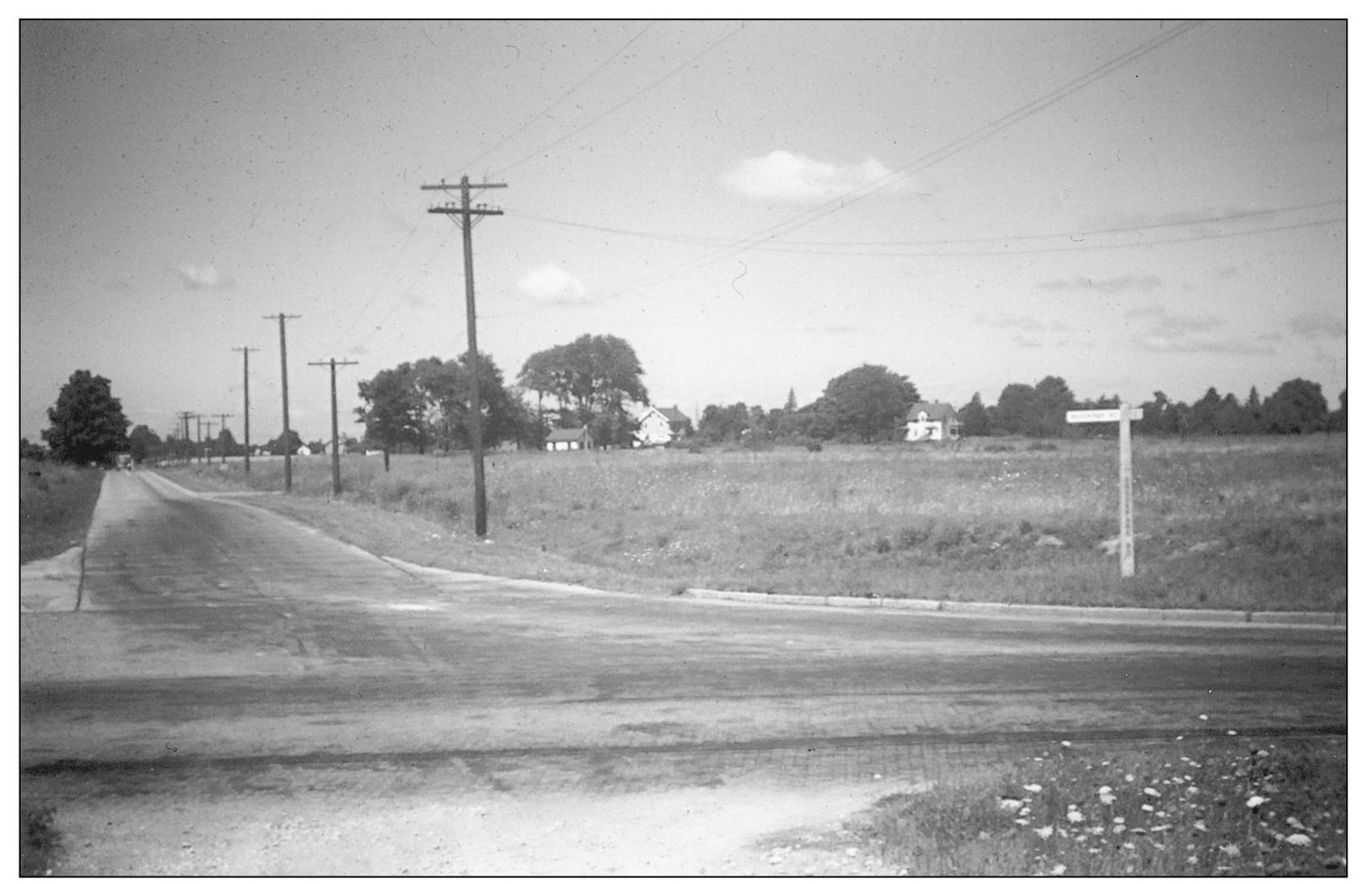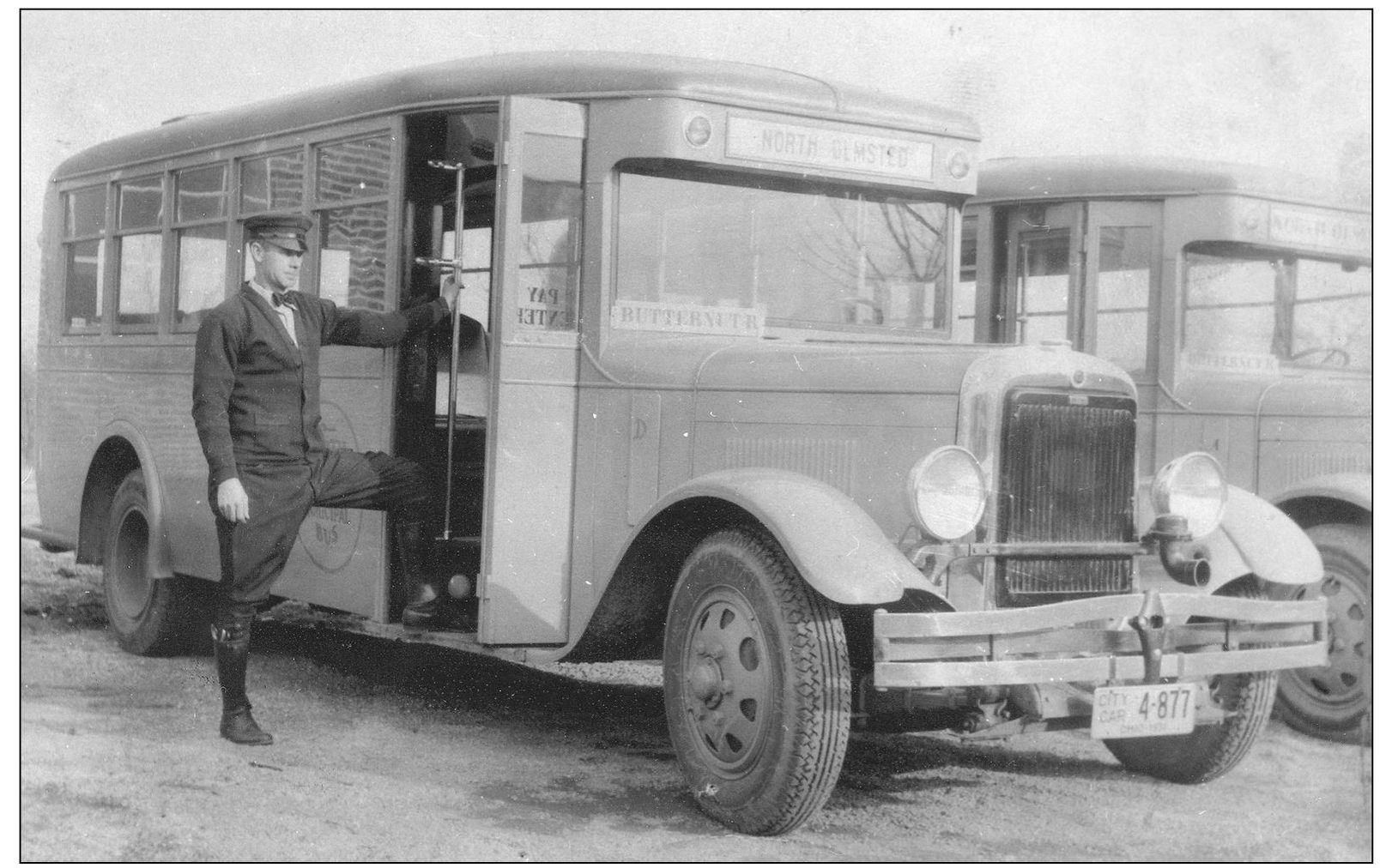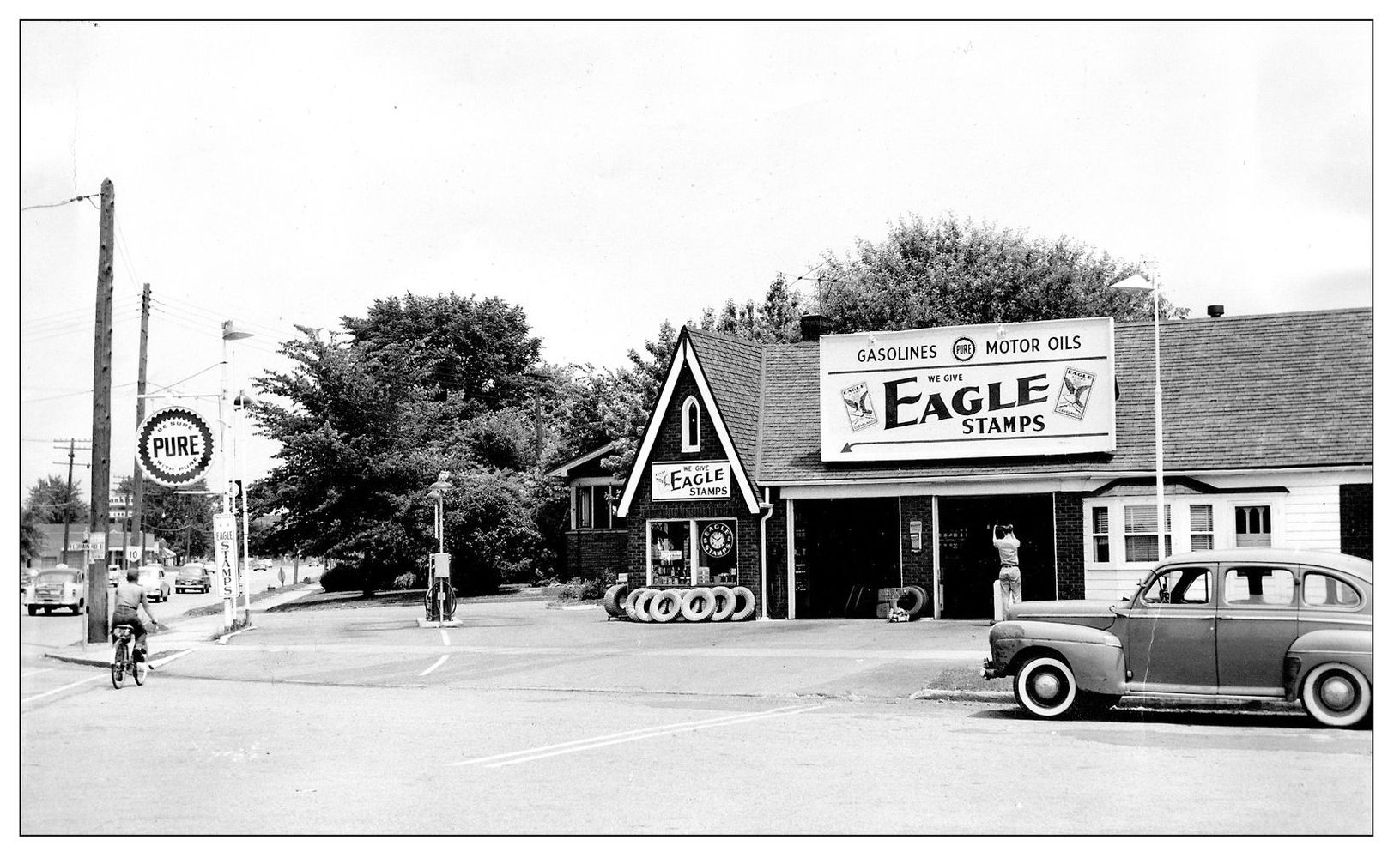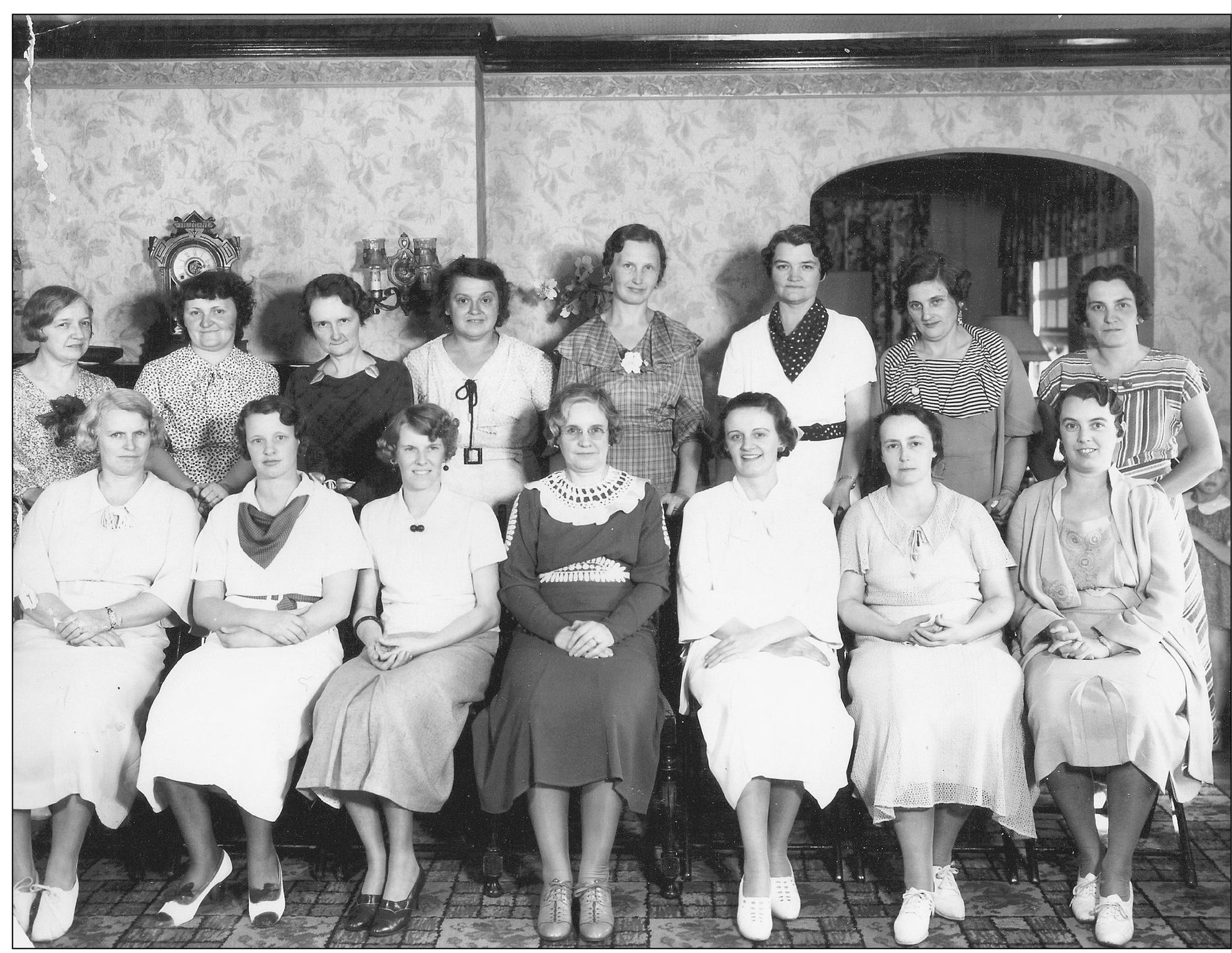Nine
ODDS AND ENDS

Smokey stands outside the fire station in the 1950s, with old Garnett School still visible across the street. Not only is no firehouse complete without a dalmatian, but also when Orrie Baumgardner, fire chief from 1944 to 1973, retired, so did his dogs. As man and dogs lived out the rest of their lives in the house at West 204th Street and Lorain Road, both were a common sight for a number of years working and playing on the front lawn. (Fairview Park Historical Society.)

Paul Ungericht (standing, left) takes the oath for city council from Mayor James A. Dunson in 1967. Ungericht was mayor of the one-square-mile Parkview Village until it was annexed to Fairview Park. Parkview became Fairview Park’s Ward 5 and Ungericht its councilman, although some people remember Ungericht as a substitute shop teacher at the high school in the late 1960s. The annexation brought lower taxes and better housing and police protection. (Cleveland Press Archives, Cleveland State University.)

The children of Parkview Village join the 1963 Fourth of July parade. (Fairview Park Historical Society.)

In April 1954, there was still old farmland to develop along West 220th Street. This sign shows the beginnings of the residential street Haber Drive, then a part of Parkview Village. (Cleveland Press Archives, Cleveland State University.)

The politicians may discuss the changes, but change is not official until the signs are changed. On the last day of 1966, Parkview Village became a part of Fairview Park. Parkview Village’s council president Mary Hoertz and Ungericht are joined by Fairview Park’s safety director Eugene Neff and Dunson. (Cleveland Press Archives, Cleveland State University.)

Area development seems to have grown north to south. Rockport Township development started on the lakefront, while the southern area that became Fairview Park and Parkview Village was isolated farmland. Lorain Road became a major street, but Brookpark Road, the southern border of Fairview Park, has remained the least developed. Hopkins Airport and the river valley certainly kept Brookpark from being more than the southern edge of town. The photograph above looks north from the American Legion’s Clifton Post in 1948. The bottom photograph was shot to the west at the same time from the same point. In the opposite direction, the concrete Brookpark Bridge was built in 1934, the same year that the new steel Lorain Road bridge was built, a compromise between the concrete and steel industries. (Courtesy of William Robishaw.)


Lawn Village, later renamed Aberdeen Commons, is 12 acres of apartments and townhouses built on Lorain Road in the early 1950s between West 223rd and West 224th Streets, stretching back to Morton Avenue. (Cleveland Public Library.)

Anybody who knows Morton Park, with its tennis courts and surrounded by houses, might have a hard time imagining that it was a city dump. Originally a gravel pit that supplied a lot of the foundation for the interurban rails between Cleveland and Elyria, it was considered as a site for Gilles-Sweet School before it was built a few blocks away in 1925. (Cleveland Press Archives, Cleveland State University.)

Along this stretch, Lorain Road closely parallels the Rocky River Valley. Usable flatland before the hill drops down varies from areas large enough for parking lots to just a few feet, but Fairview Park Cemetery has long held down a small, serene patch of land. Familiar names appear in the cemetery, like Spencer, Mastick, Eaton, Potter, as well as Fred Gilles and John H. Sweet, whom the school was named after. Going back at least to 1830, some of the earliest graves are of Revolutionary War soldiers from the area. (Fairview Park Historical Society.)

Lorain Road’s bridge, built in 1934, was preceded by this iron bridge built in 1895 so the interurban could cross the valley. This bridge’s opening prompted the street name change from Coe Ridge to State Street long before it was changed again to Lorain. Lorain Road was designated Ohio Route 10 in the 1930s to attract state funding to help pay for the new bridge. (Fairview Park Historical Society.)

This was the very beginning of the North Olmsted Bus Line (NOMBL). It was started in 1931 to transport Fairview and North Olmsted residents to points east, such as downtown Cleveland. It filled a need after the interurban’s last run on February 28, 1931. It was the first municipally owned bus line in Ohio. (Fairview Park Historical Society.)

This interurban coming off the old Lorain Road bridge ran from Cleveland to Elyria from 1895 to 1931. Essentially extensions of city streetcar lines, electric interurbans were an improvement over steam. There was no pollution, and they were cheaper to operate. When paved roads arrived, the tracks were harder to maintain, and so the interurban outlived its usefulness. (Fairview Park Historical Society.)

Pictured here is the older bridge, which existed from 1895 to 1934, but one could easily imagine today that farmers once gathered hay in the valley beneath Lorain Road. (Fairview Park Historical Society.)

This is now just the northeast corner of the suburb. It is hard to imagine today, seeing the Coffinberry area as a fully developed neighborhood, that it was originally marketed as an area with room to build one’s dream home. It was extolled that the relatively new Lorain Road, Detroit Road, and Hilliard Road bridges allowed easy access to Lakewood and Cleveland. (Fairview Park Historical Society.)

The Coffinberry neighborhood was named for the Great Lakes shipping executive Henry Coffinberry, with both his first and last names becoming names of streets in the neighborhood. His company proved metal could be made to float, building the first iron-hulled steam freighter on the Great Lakes, the Onoko, a prototype of the modern Great Lakes freighter, as well as the steel Saranac. Both ship names are also Coffinberry-area street names. (Fairview Park Historical Society.)

It takes a map to really illustrate how well something is situated. The mighty Rocky River long had its popular namesake town at its Lake Erie mouth. But further south, the river had been a hindrance to traveling east. The map shows how conveniently located Coffinberry was to everything, including bridges. (Fairview Park Historical Society.)

This house continued to stand at the corner of West 204th Street and Lorain Road into the 1990s. But here in the 1920s, West 204th Street did not exist yet. (Courtesy of Sue Lachendro.)

The old and new coexist in the final moments before the last few blows to the remaining fragments at West 204th Street and Lorain Road. (Courtesy of Sue Lachendro.)

Bay Furnace and Sheet Metal Company started in Bay Village in 1944 and eventually returned there. But in between, it spent a few years in Fairview Park, developing the corner next to the house on the opposite page. (Courtesy of Sue Lachendro.)

This was Suesse gas station at West 213th Street and Lorain Road in the early 1950s. For the record, when the city name change was put before the voters in the late 1940s, the name Fairview Park got 1,040 votes, Fairview City got 661, Fairhaven got 224, Fairpark got 240, Rockport got 144, Fairdale got 55, Westbridge got 56, Fairville got 117, Riverview got 110, New Fairview got 112, and City of Fairview Village got 123. (Fairview Park Historical Society.)

A routine inspection by the fire department in May 1956 allows for another random street scene. Here are two of the businesses that have called this building at West 228th Street and Lorain Road home over the years: Hebbard’s Delicatessen and Korud TV and Radio Service. (Fairview Park Historical Society.)

They called it Needle Book Club, and monthly meetings were at members’ homes. This particular month, the hostess was the lady at the right of the first row, a Mrs. Faus or Fause, whose husband was a dentist. Apparently it was not merely a book discussion group, because the guest speaker, in the front row center, was the wife of the principal of a Cleveland school for boys with behavior problems. (Fairview Park Historical Society.)

Since the high school did not have an auditorium until 1952, the Garnett School auditorium was the village’s stage. Local people got to perform as the Fairview Players. In every photograph of their productions, the stage lighting casts very prominent shadows, so they were not exactly professional lighting designers. This production in April 1948 was a comedy called January Thaw. (Fairview Park Historical Society.)

In 1952, Fairview Players presented an original musical comedy about the gold rush called Thar’s Gold in Them Thar Hills. (Fairview Park Historical Society.)

This perspective of West 210th Street and Lorain Road, shot on March 25, 1954, dramatically shows how much of southern Rocky River along the top of the picture was still farmland. That left Fairview to differentiate itself as a separate suburb, even without the advantage of Rocky River’s lakefront. (Fairview Park Historical Society.)

Various changes can be seen in this 1951 aerial shot. The old Gilles-Sweet School is along the bottom. The north wing (left) was added the year before, and the south wing was added the following year. The three-year-old shopping center dominates the center right of the photograph, with a new store being built on the west end. The smoke in the upper-right corner is a trash-burning operation in the valley. (Courtesy of Adam Pangrace.)

In the spirit of true sportsmanship, these 1942 Fairview Village summer recreation participants choose sides in a peaceful way, since they are neither rival suburbs nor rival countries. To the left of the bat is Joseph Dorogi, and to the right is Donald Kenzig. (Cleveland Press Archives, Cleveland State University.)